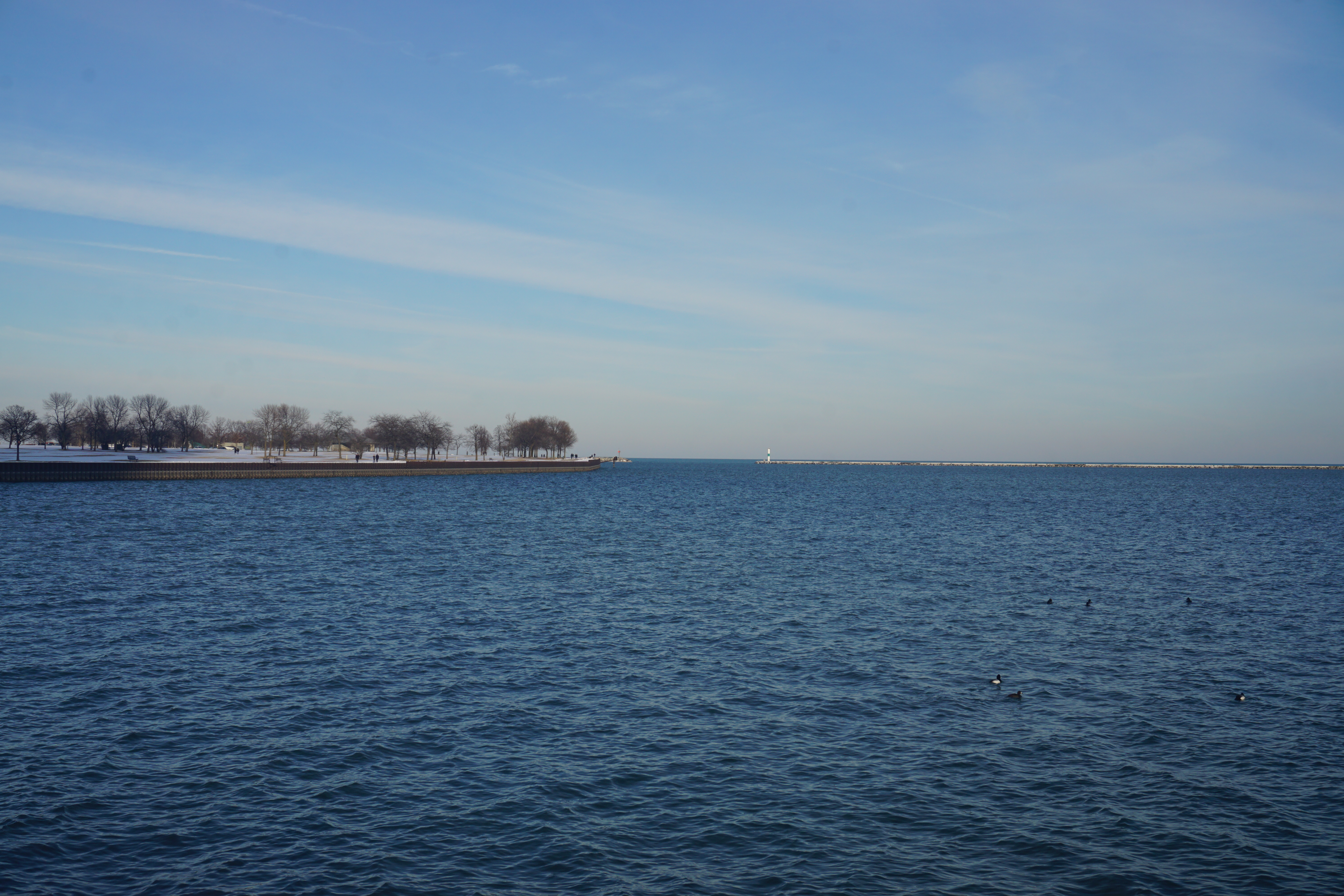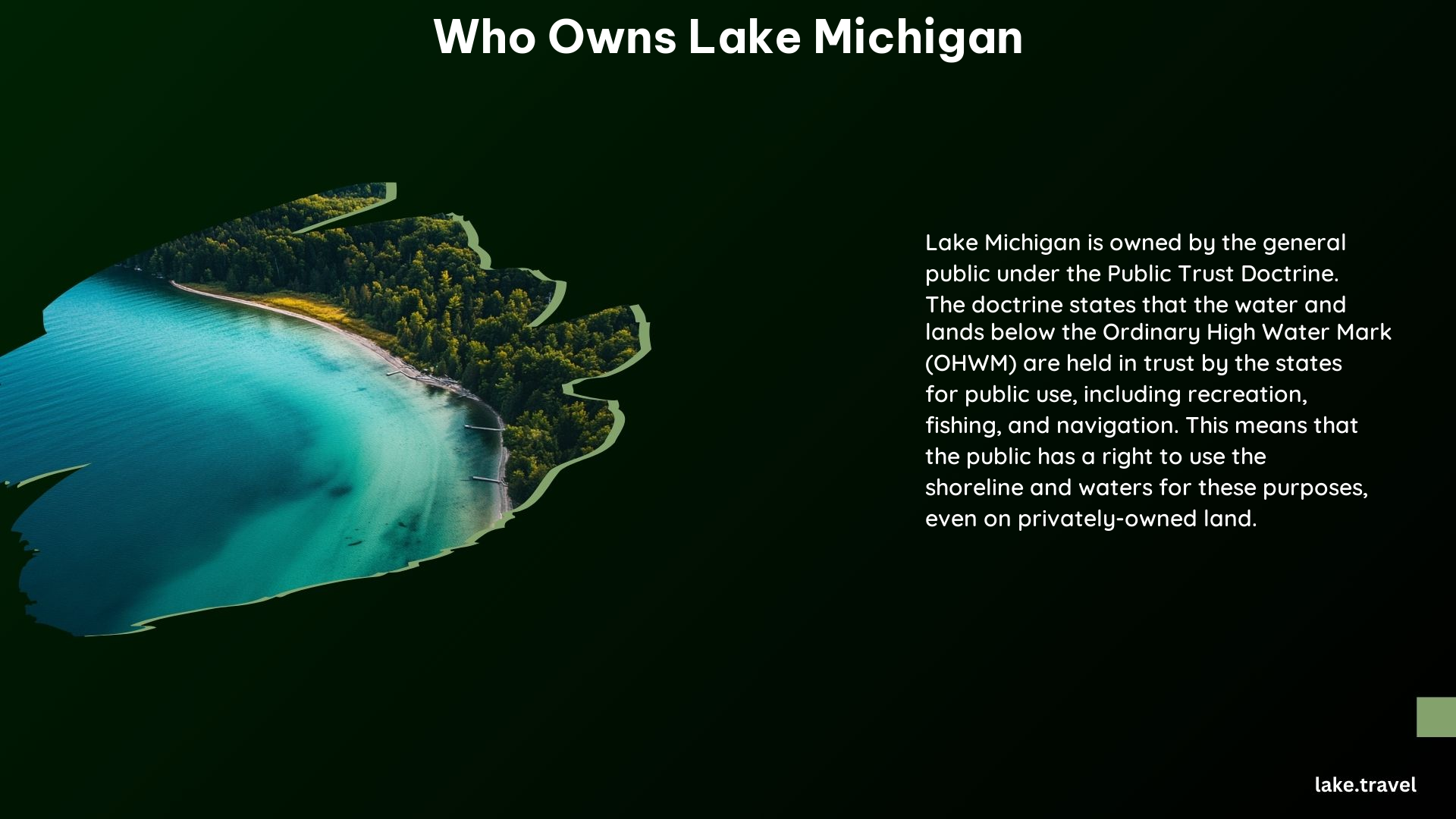Lake Michigan is owned by the general public under the Public Trust Doctrine. This international legal theory ensures that the water and submerged lands of the Great Lakes are held in trust by the states for the benefit of all citizens. The states bordering Lake Michigan, including Michigan, Indiana, Illinois, and Wisconsin, are responsible for protecting and preserving the lake for public use, such as swimming, fishing, and boating.
The Public Trust Doctrine

The Public Trust Doctrine is a legal principle that originated in Roman law and has been adopted by many countries around the world. This doctrine states that certain natural resources, such as navigable waters and the lands beneath them, are held in trust by the government for the benefit of the public.
In the United States, the Public Trust Doctrine has been applied to the Great Lakes, including Lake Michigan. This means that the states bordering the lake are responsible for managing and protecting the water and submerged lands for the public’s use and enjoyment.
State Ownership and Management

Lake Michigan is owned by the states of Michigan, Indiana, Illinois, and Wisconsin, which are responsible for managing and protecting the lake for public use. This includes:
- Regulating activities on the lake, such as boating, fishing, and swimming
- Protecting the lake’s water quality and natural resources
- Ensuring public access to the shoreline and water
The states also have the authority to lease or grant permits for certain uses of the lake, such as commercial activities or infrastructure projects. However, these activities must be consistent with the public trust and must not interfere with the public’s right to use the lake for recreational purposes.
Private Property Rights
While the states own the water and submerged lands of Lake Michigan, private property owners along the shoreline have certain rights to their land. The public trust zone extends to the ordinary high-water mark, which is the point on the shoreline where the presence and action of the water are continuous, leaving a distinct mark.
Private property owners have the right to use and enjoy their land up to the ordinary high-water mark. However, the public trust doctrine ensures that the public has the right to access the shoreline and water for recreational activities, even on privately-owned land.
Public Access and Use
The public has the right to use Lake Michigan for a variety of recreational activities, including:
- Swimming
- Fishing
- Boating
- Walking along the shoreline
The public can access the lake through public parks, boat launches, and other designated access points. In some cases, the public may also have the right to walk along the shoreline on privately-owned land, as long as they stay below the ordinary high-water mark.
Challenges and Controversies
While the Public Trust Doctrine provides a clear legal framework for the ownership and management of Lake Michigan, there have been some challenges and controversies over the years. Some of the key issues include:
- Disputes over the location of the ordinary high-water mark, which can be difficult to determine
- Concerns about the impact of commercial activities, such as dredging or infrastructure projects, on the lake’s natural resources
- Debates over the extent of public access rights, particularly on privately-owned shoreline
Despite these challenges, the Public Trust Doctrine remains a fundamental principle that guides the management and protection of Lake Michigan for the benefit of all citizens.
Conclusion
In summary, Lake Michigan is owned by the general public under the Public Trust Doctrine. The states bordering the lake are responsible for managing and protecting the water and submerged lands for public use, while private property owners have certain rights to their land along the shoreline. The public has the right to access and use the lake for a variety of recreational activities, and the states must balance the needs of the public with the interests of private landowners and commercial activities.
References:
- Lachman PLC. (2021, October 18). Great Lakes Riparian Rights: Who Owns the Shore? Retrieved from https://www.lachmanplc.com/great-lakes-riparian-rights-who-owns-the-shore/
- Michigan League of Conservation Voters. (n.d.). Beach Walking on the Great Lakes Shoreline. Retrieved from https://www.michiganlcv.org/case/beach-walking-great-lakes-shoreline/
- For Love of Water. (2024, June 4). Court Confirms 45 Miles of Lake Michigan Shoreline Owned by State Under Public Trust. Retrieved from https://forloveofwater.org/court-confirms-45-miles-of-lake-michigan-shoreline-owned-by-state-under-public-trust/.
